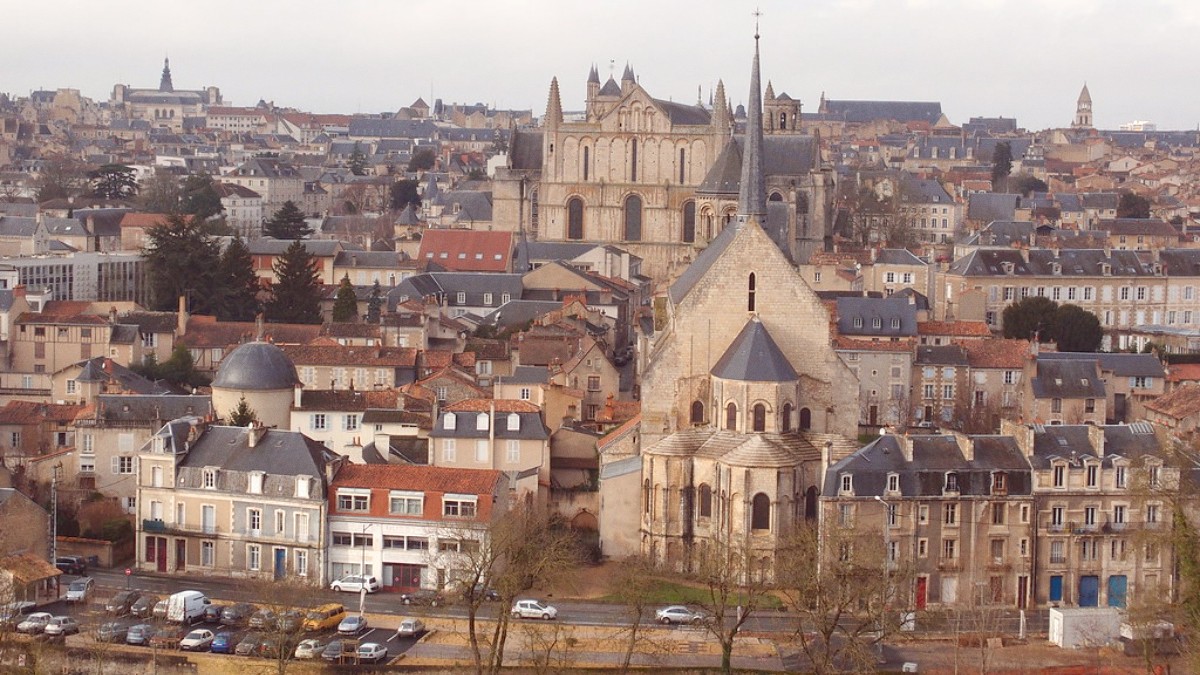
Southwestern France, France
The city offers a genuine slice of French life, combining cultural depth with contemporary attractions. Your visit here holds discovery, relaxation, and a connection to centuries of European heritage.
Poitiers, the capital of the Vienne department, sits in the Nouvelle-Aquitaine region of Southwestern France. Its location places it approximately 340 kilometers (210 miles) southwest of Paris, acting as a natural bridge between the Loire Valley, the Atlantic coast, and the south of France.
The city is a strategic position on a promontory, a raised piece of land. This promontory sits at the confluence, or meeting point, of two rivers: the Clain and the Boivre. This natural setting, with rivers flanking the high ground, provided a strong defensive advantage throughout history. The city developed outward from this secure core, with its historic center still perched atop the hill, offering views of the surrounding river valleys.
The city began as a Gallic oppidum, an early Iron Age fortified settlement. When the Romans arrived, they recognized its strategic value, transforming it into Limonum, a significant Roman city. In the early Christian era, Poitiers rose as a major spiritual center. Saint Hilary of Poitiers, a prominent 4th-century bishop, greatly influenced Christian theology. The city's ancient Baptistère Saint-Jean, one of France's oldest Christian buildings, connects directly to this period.
By the 5th century, Poitiers became the capital of the Visigothic Kingdom of Aquitaine. Two battles fought near Poitiers stand out as major turning points: the Battle of Vouillé (507 AD), which secured Frankish control, and the Battle of Poitiers (732 AD, also known as Battle of Tours), which halted the Muslim advance into Western Europe. During the Middle Ages, Poitiers gained prominence as the capital of the Duchy of Aquitaine, with Eleanor of Aquitaine frequently holding court here. The Hundred Years' War brought renewed conflict, with the Battle of Poitiers (1356) resulting in a crushing English victory and the capture of King John II of France.
Early Iron Age settlement transformed by Romans.
One of France's oldest Christian buildings.
Frankish victory securing control over Aquitaine.
Charles Martel's victory halting Muslim advance.
Established by King Charles VII, becoming a prestigious institution.
In 1431, King Charles VII founded the University of Poitiers, further elevating the city's intellectual standing. During the French Revolution, Poitiers retained its administrative role, adapting to the dramatic changes sweeping the nation. In the modern era, Poitiers has evolved beyond its historical military and religious roles.
It now functions as a major administrative, educational, and technological hub. The establishment of Futuroscope, an unique theme park focused on future technologies and multimedia, in the late 20th century, propelled Poitiers onto the international stage, blending its deep past with a vision for the future.
Poitiers is often called "the city of a hundred steeples" due to its numerous churches, a reflection of its historical spiritual prominence.
Education and research play a large part, anchored by the university. Tourism, however, is a prominent position, largely fueled by the internationally recognized Futuroscope theme park.
This layering of history means that every street and building in Poitiers is a story, inviting visitors to connect with events and figures that shaped not just France, but the wider European continent.
Poitiers, often called "the city of a hundred steeples" due to its numerous churches, is home to approximately 90,000 inhabitants, known locally as Poitevins. This medium-sized city distinguishes itself with its remarkably well-preserved historic city center, a treasure trove of Romanesque architecture. Its past defines its present, with ancient churches, a sprawling ducal palace, and winding medieval streets forming the core of its appeal.
The youthful influx from the university ensures a dynamic counterpoint to the city's ancient roots.
Poitiers serves as a natural gateway to several distinct and popular French regions, including the Loire Valley and Marais Poitevin.
Approximately 90,000 inhabitants, known as Poitevins, reside in the city.
The city boasts a remarkably well-preserved historic center with Romanesque architecture.
Travelers use Poitiers as a convenient base for exploring the grand châteaux of the southern Loire Valley, which are a short drive or train ride north. To the west, the serene waterways of the Marais Poitevin, often called "Green Venice," offer a peaceful natural escape.